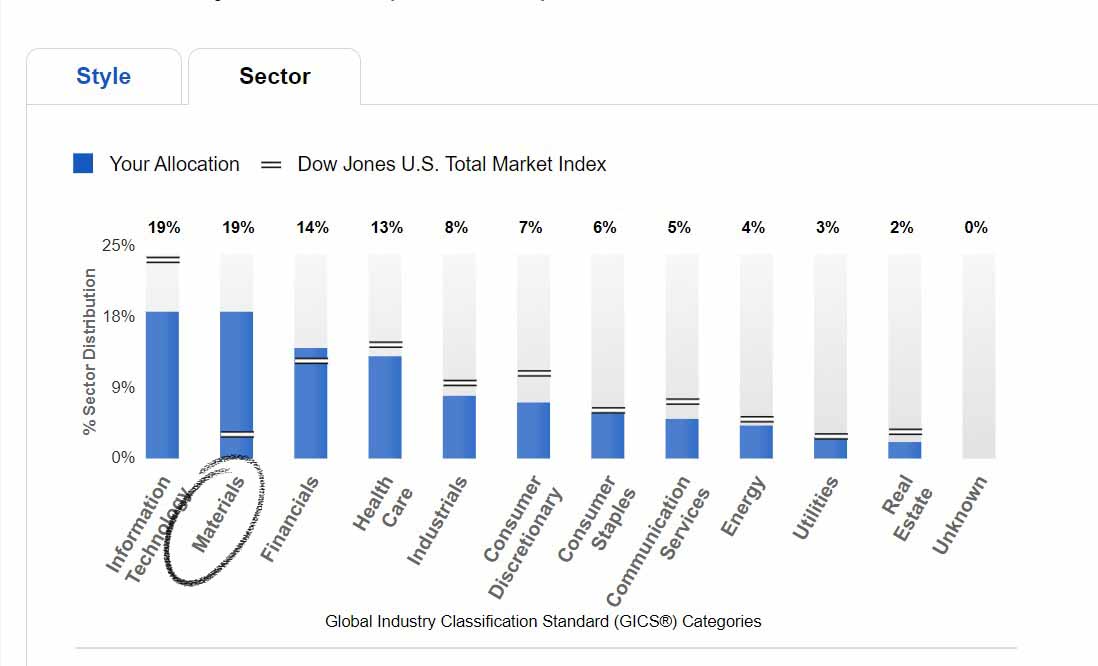
Assessing Investment Portfolio Health – What’s in Your Portfolio?
It is commonly accepted wisdom that a “balanced” investment protfolio is a key part of managing your investments. By having an balanced portfolio, you spread your risk around to different types of investments, while also giving yourself the oppurtunity to benefit if and when there is an increase in stock prices.
As EFTs and Index Funds have gained in popularity, the result is that people are buying more “baskets” filled with a variety of stocks. However, that means that they don’t generally know what their investments are, they just know that they have an ETF or an Index Fund. I’ve been guilty of this. I see that a particular ETF (like VOO for example – which is Vanguard’s S&P500 ETF which tracks the Standard & Poor’s Index) has a nice return, say 10% per year on average, and I would like that return so I buy it. But what is really in it?
It’s like buying a pie, becuase I like the crust, the price and the smell when I cook it. Plus, if I eat it, I feel full. But I don’t necessarily know what its made of, and I maybe don’t WANT to know what its made of. And that’s the problem, becuase we eventually will reap the consequences of what was in that investment pie, whether we want to or now. Turns out, if you pie is full of saturated-fat laden products, loads of sugar and chemical perservatives, it may taste great now, but a couple of years of eating these pies can wreck your health. The same goes for your investment portfolio.
If you held GE from the 60s to the 90s, you looked like an investing genius, but if bought it during the 90s, you most likely lost a lot of money on that stock, as the price moved from an average of about $150 to today’s price of about $83. You need to know what’s in your portfolio pie.
My Investment Portfolio Allocation in 2023
Confession time: I just learned how to use the free portfolio analysis tool in Fidelity. Don’t get me wrong, I haven’t been investing randomly – I use a value investing methodology, try to only buy quality companies with wide moats, good ROI on expended capital and reasonable dividends to boot, but as I pick my invesments I have a ended up with concentrations.

What jumped out at me about my stock allocations:
- Materials Sector is way over-allocated. Note that I have 19% of my porfolio allocated in this area, whereas the Dow Jones would allocate about 4%. I did this as a defensive measure, and it did work somewhat – last year when the S&P500 plunged, this part of my porfolio stayed stable.
- Information Technology is under-allocated. I’ve been nervous about this since the P/E ratios of tech companies have been sky-high. Plus I got burned by the hype (curse you Palantir!) in tech. But this suggests that I might be too conservative in this area.
- Real Estate is also under allocated. The good news: everyone is down on real estate. That means that there are deals to be had. REITs and real estate may pose some good buy-in oppurtunities this year.
Who Died and Made Dow Jones King?
One important thing to note – the Dow Jones is a description of the U.S. economy, not a perscription of how things should be, nor a recommendation of how to invest. BUT this super-handy analysis report (again: free from Fidelity!) gives you a starting point of assessing your portfolio. If you take this information and compare it to current economic trends, it’ll give you a starting point of how to invest moving forward.
Next step:
- You need to figure out what is IN your portfolio before you can determine if it is “balanced.”
- You need to figure out what “balance” means for you. But more on that later….
- You need to figure out what your goals are. For your portfolio, sure, but you can’t control the market. And you’re not smarter than everyone else in the finance industry (clearly the guys who sold the current money manager model are the smartest guys ever) so don’t assume you can invest like Buffet or Burry or whatever biography you just read. So don’t try to control what you can’t control.
- Go do something fun. Enjoy your family. Go for a walk. Have a cup of coffee. Whatever. But your portfolio isn’t your value or your life, and if you win at money, and lose at the most important things in life, you still lose.
